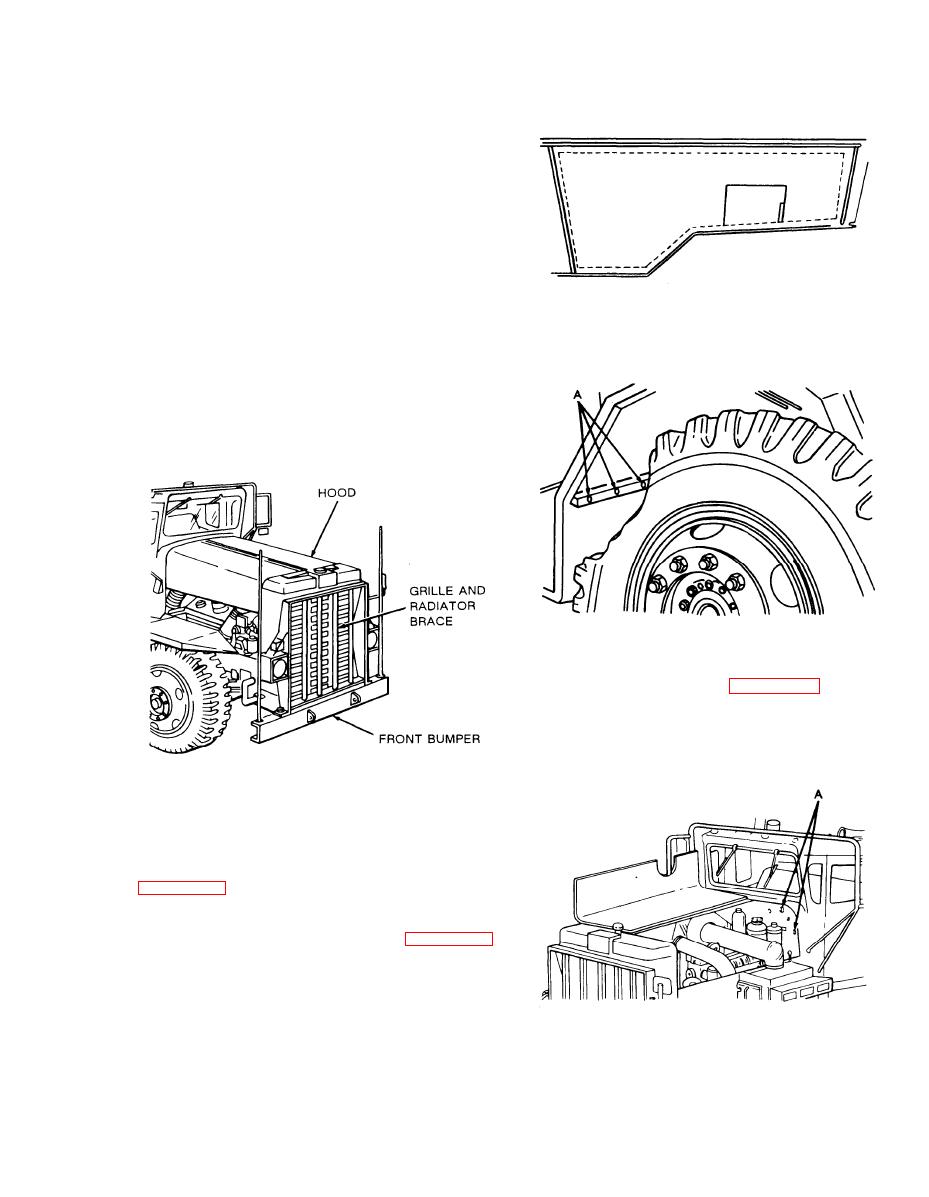
TB 43-0213
tection. A 10 mil wet film thickness is required to obtain
a minimum five mil dry film thickness. If needed, the
vehicle can be resprayed to reach proper thickness.
b. Spraying Pressure. The rustproofing compound
should be applied to sheet metal and structural
members in even coats. Spraying pressure should be as
low as possible while maintaining an even spray pattern.
An acceptable starting point is 40 psi (276 kPa), but
adjustments may have to be made due to temperature
changes and differences in rustproofing compound.
Using too much pressure will waste compound by
causing overspray and excessively thick coatings.
TA504912
Figure 17-5. Rustproofing Engine
c. Rustproofing Hood, Grille, and Bumper (see
Side Pane!s.
Figure 17-4). Use 90 degree short tool to completely
coat the rear side of the grille and radiator brace, the
inside of the front bumper, and the inner panel of the
hood.
TA504913
Figure 17-6. Rustproofing Front Fenders,
f. Rustproofing Cowl (see Figure 17-7).
(1) Insert 90 degree short tool into holes A and
spray cowl in all directions.
TA504911
Figure 17-4, Rustproofing Hood, Grille,
and Bumper.
Engine
P a n e l s (see
Side
d. Rustproofing
the rear side of engine side panels.
(1) Insert 90 degree short tool in holes A in
front fender supports, then loosen top fender bolts to
spray between fenders and supports.
TA504914
(2) Use the same tool to completely coat the
Figure 17-7. Rustproofing Cowl.
underside of the fender, including all supports.
17-3

